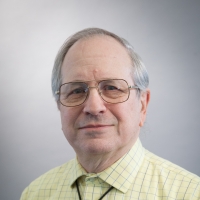Gerald Jay (Jerry) Sussman, MIT Panasonic Professor of Electrical Engineering and CSAIL member, was recently awarded the 2024 Taylor L. Booth Education Award by the Institute of Electrical and Electronics Engineers (IEEE) Computer Society. Sussman received the honor for his “inspirational approach to the teaching of computer science through functional programming.”
Each year, the Computer Society awards a bronze medal and honorarium to celebrate the career of an impactful teacher in computer science and engineering. Sussman was credited with inspiring students “from a broad range of STEM disciplines” through his influential courses.
Sussman and fellow MIT professor Hal Abelson developed and taught the introductory programming class 6.001, “Structure and Interpretation of Computer Programs,” leaving behind a lasting legacy for aspiring computer scientists at MIT. The course ran from 1980 to 2007, emphasizing computing fundamentals such as abstraction and programming language design using the Scheme programming language, which Sussman co-invented in 1975.
In 1984, Sussman and Abelson collaborated with Sussman's wife, Julie, to publish a textbook for the course, embraced by many as “The Wizard Book.” The creative work featured fictional characters like Alyssa P. Hacker and Lem E. Tweakit, and was later translated into Chinese, Polish, and French, among many other languages.
Sussman later integrated his computational approach into physics, teaching “Structure and Interpretation of Classical Mechanics” alongside CSAIL associate member Jack Wisdom. Nearly twenty-five years after publishing the course as a textbook in 2001, the duo still teaches their class at MIT.
Sussman began at MIT as a freshman in 1964, kickstarting an impressive career in AI research. His work in the field includes problem-solving by debugging almost-right plans, and language structures for expressing problem-solving approaches. Additionally, Sussman contributed to the propagation of constraints applied to electrical circuit analysis and synthesis. Sussman's overall motivation is understanding the problem-solving methods used by scientists and engineers, with the goal of automating and formalizing their processes to improve educational strategies.
Sussman also applied AI to computer-aided design (CAD) of very large-scale integrated circuits, which incorporate a huge number of transistors in a chip. These methods were used to design and implement a Scheme interpreter system on a chip. He used similar methods to develop special-purpose machines to do high-precision orbital mechanics calculations. Beyond these contributions, he has participated in the engineering of large astronomical telescopes and helped pioneer the field of synthetic biology.
The longtime MIT innovator’s teaching efforts earned him the IEEE’s Educational Activities Board Major Education Innovation Award last year, the Computing Machinery’s (ACM) Karl Karlstrom Outstanding Educator Award in 1990, and the Bose Award for Excellence in Teaching in 1992. Sussman is an IEEE life fellow, a National Academy of Engineering member, and a fellow of the American Academy of Arts and Sciences, the American Association for Artificial Intelligence, the ACM, and the American Association for the Advancement of Science. He has been a bonded locksmith. He is a member of the American Watchmakers-Clockmakers Institute, the Amateur Telescope Makers of Boston, the Massachusetts Watchmakers-Clockmakers Association, and the American Radio Relay League.


